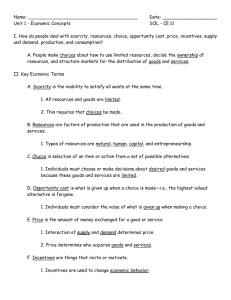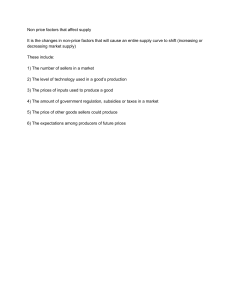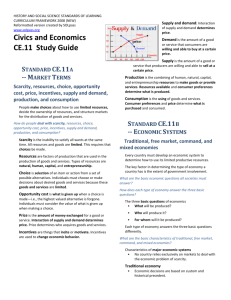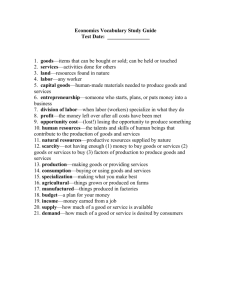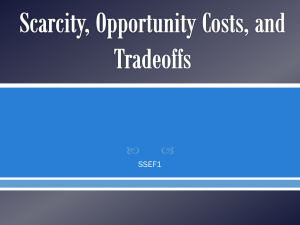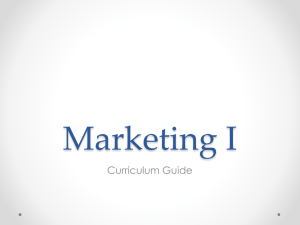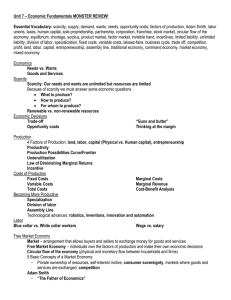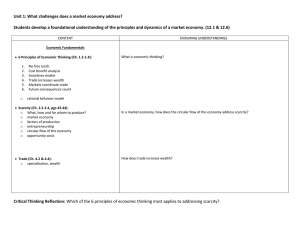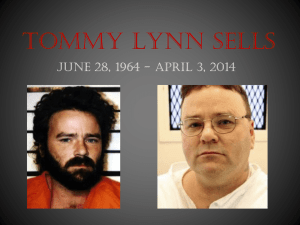Economics Vocabulary: Key Terms & Definitions
advertisement
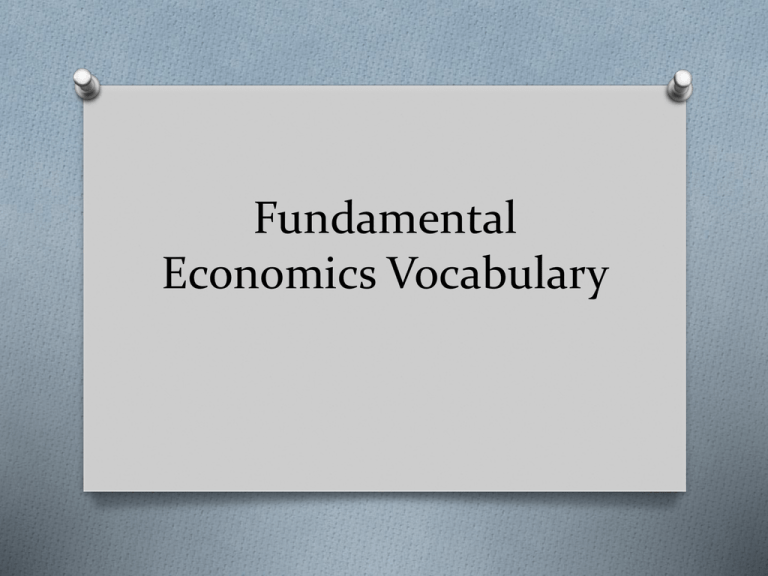
Fundamental Economics Vocabulary Scarcity O The fact that resources are limited. O Examples of Scarcity: water, oil, fertile soil Factors of Production O Resources used to make goods O Goods are items sold in a market O Examples: Land, labor, capital, and entrepreneurship Land O Natural resources used in production O Includes the land where a factory is set O Examples: 1) Trees to make paper, 2) cocoa to make chocolate bars Labor O The contribution of human workers to the production process. O Example: 1) Miner for the gold trade, 2) Cashier for McDonalds Capital O All the structures and equipment involved in the manufacturing process. O Examples: 1) Robots in the manufacturing of cars, 2) Plastic in the production of CocaCola Entrepreneurship O Creative, managerial, and risk-taking capabilities that are involved in starting up and running a business. O Examples: Steve Jobs for Apple, Bill Gates for Microsoft Opportunity Cost O The BEST option you lose when you make a decision. O Examples: You have decide between studying for a test and going to a party. You decide to go to the party, your opportunity cost is a good grade on a test. Production Possibilities Curve O A graphical measure that calculates opportunity cost. Specialization O A method of production where a business focuses on the production of a specific part of production. O Example: Country A makes tires and sells it Country C. Country B makes windows and sells it to Country C. Country C gathers these goods to make a car. Voluntary Exchange O Part of the economy where buyers and sellers freely deal with each other. Command Economy O An economy where the government controls all factors of production and economic decision O Examples: Cuba, North Korea, Soviet Union Market Economy O An economy where consumers and producers have control of all economic decisions. O Examples: Hong Kong, United States before 1890 Mixed Economy O An economy where consumers and producers make economic decisions that follow government regulations/restrictions. O Examples: United States, United Kingdom, France, Canada Profit Motive O The main incentive for entrepreneurs to start a business is to make money. Consumer Sovereignty O Customers having the freedom to choose what they buy. O Example: You want shoes, you have the choice to buy Nike, Adidas, Reebok, Timberlands, etc. Competition O Rivalry between sellers for market share. O Examples: Coke v Pepsi, Apple v Samsung, McDonald’s v Burger King Factor Market O The part in the circular flow model where resources (factors of production) are used to make goods. Product Market O The part in the circular flow of economics where goods are bought and sold. Allocation O To distribute resources such as land, labor, capital. O Example: I need to create a book, I get one person to write it, one person to print it, one person to publish it. Trade-Off O Giving up something for something else. O Example: I give you money, you give me a phone. I give you a video game, you give me a different video game.

